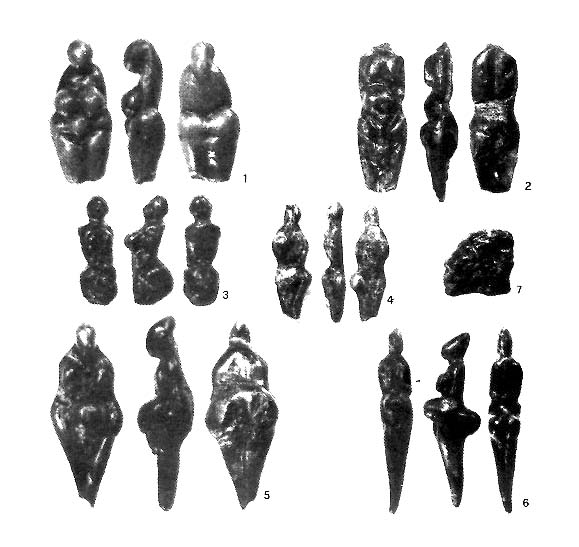It is about no. 7 figurines out of a total of 15, found during excavations at the Balzi Rossi complex, a stone's throw from the French border, sold to the Musée des Antiquités Nationales of Saint-Germain-en-Laye in France and dated to the Paleolithic, around 25.000 BC The Balzi Rossi complex, from the moment it was discovered in the second half of the 800th century, made headlines as one of the most representative monuments of the history of man in Europe, both for the numerous testimonies offered and for the significance of the finds : the site, a high cliff 100 meters long made up of dolomitic limestone full of iron minerals, was inhabited from about 230.000 to 10.000 years ago. Below is the description of 6 of the 7 statuettes exhibited in France, since for the yellow steatite figurine, known by the name of "Venus of Mentone" (indicated by White and Bisson, those who in 1998 represented the 14 statuettes in a single painting, with the number 04), a file dedicated to it was drawn up as it was chosen as the logo of "Prehistory in Italy".
La Pulcinella figurine (indicated by the number 05) is a female figure with pointed head and legs, in dark olive green steatite; measuring 61x11x20 mm., weighing about 9 grams, it was found in the Grotta del Principe during the excavations conducted by Jullien between 1892 and 1895. It was so called due to the shape of the head, narrow and oval which ends with a pointed tip pulled back, perhaps to represent a hair, while the chin has a triangular profile projecting forward. Her upper limbs are not represented but a volume suggests their presence, as if the hands had joined below the voluminous breast; her belly is very accentuated and prominent, like that of a woman in labor, with a horizontal cut to indicate the navel. The triangular pubis has an incision in the center to represent a vulva; below the incision continues to divide the legs, while on the posterior side the buttocks are particularly prominent with a vertical incision continuing into the lower limbs.
La Lozenge or “rhomboidal Venus” (indicated with the number 07), so named for its symmetrical shape, with the hips spread and the head and legs ending in a point, so as to represent the shape of a lozenge. The head is devoid of any detail, as if it were covered by an ovoid hood, ending in a point both in the upper part and in correspondence with the chin; a groove marks the contour of the hair. The breasts are flattened, oval in shape, separated from each other; the arms are missing, even if a curve at the shoulders evokes their presence. The belly is exaggeratedly prominent, below the pubic triangle it has a vertically open vulva at its centre; the same sign is evident in the back, below the flat buttocks, between the two legs which finally end in a tapering way above the position of the feet. Its maximum dimensions are 62x24x17 mm., for a weight of about 18 grams; it was made of dark olive green steatite and found by Jullien in the Cave of the Prince. Its conditions are excellent.
La Negroid head (indicated by the number 11), as the name announces, is a partially anthropomorphic head with a receding forehead and a squared cap on the head created by deep incisions to form a dense grid, a motif that recalls the caps of the Gravettian (lady of Brassempouy or that of Laussel). The face is rounded without a nose, with deep eye sockets, marked cheekbones, a mouth made with incisions and a prominent chin. The base is smooth, which suggests that it was an isolated head already in the Paleolithic. Found by Jullien in the Grotta del Principe, it has the maximum dimensions of 25x14x24 mm., with a weight of about 13 grams; made of opaque dark green steatite, it is in fair condition, with some fractures in the upper part of the head, probably caused by flaking. It underwent a restoration intervention with the gluing of several pieces by the prehistory scholar and collector of Paleolithic art Edouard Piette, author of the purchase of 6 statuettes which were then donated by him to the Musée des Antiquités Nationales of Saint-Germain-en- lay.
THEHermaphrodite (indicated by the number 12), is a flattened female figurine missing the head and lower limbs from the knee down. The flat breasts are divided from each other by an evident groove, the circular belly is slightly protruding and occupies an anomalous position, at the height of the stomach. Under the belly there are three reliefs that are difficult to interpret, i.e. two elongated masses probably representing the hands and in the center an element interpreted as a phallus, which is why Edouard Piette gave the name of Hermaphrodite; a recent interpretation instead attributes this detail to the moment of childbirth, the element in the center would be the head of a child that emerges while the engraved lines would represent the hair. In support of this thesis, in the Ocher Lady (among the artifacts found in Canada) the hair is depicted with the same technique. On the back, in the lower part, a garment or an ornament covering the buttocks is represented. Found by Jullien in the Grotta del Principe, it has the maximum dimensions of 51x17x11 mm., the weight of 11 grams and is dated to 25.000 BC; it was made of olive green steatite. The state of conservation is mediocre, in addition to the missing parts (head and half of the lower limbs), it has various fractures in several points, with parts of missing material.
La lady with goiter (indicated by the number 13), is a flat female statuette with a very damaged head, therefore the face is no longer present; in correspondence with her neck there is a small knot, interpreted by Edouard Piette as a goiter, hence the name, but in reality it could be a pendant. Her breasts and belly are conical with the tips pointing downwards; in the lower part of the belly, in the center of the pubic triangle, a deep longitudinal fissure represents a vertical vulva between two labia majora. On the back two piriformis masses can be interpreted as buttocks while the legs are missing above the knees. Found by Jullien at a depth of 3-4 meters of the Barma Grande in a layer dated to 12.000 BC, it has maximum dimensions of 45x14x8 mm. and a weight of about 4 grams; made of deer horn, it has a mediocre state of conservation with many missing parts as well as having been glued in the past at the waist, as it was broken into two parts.
La undescribed figurine (indicated by the number 14), also nicknamed "Unnamed” since it is the only female statuette among the Balzi Rossi finds that was not presented in the 1902 report by Edouard Piette, perhaps because it was acquired by the Museum Heritage after the drafting of the work. She has an oval head with sketchy features, in fact the eye sockets and the outline of the nose are just evident. Her breasts hang downward, separated from each other and from the rest of her chest by deep incisions. The lower part of the body is missing so the shape of the legs is not known. Found by Jullien in the Grotta del Principe, it has maximum dimensions of 38x12x14 mm. and weight about 8 grams; made of opaque dark green steatite, much less smooth than the other statuettes of the same material, it also has various ferrous concretions. The state of conservation is mediocre, both for the missing parts and for the fractures in various points as well as various encrustations. The figurine is dated to 25.000 BC
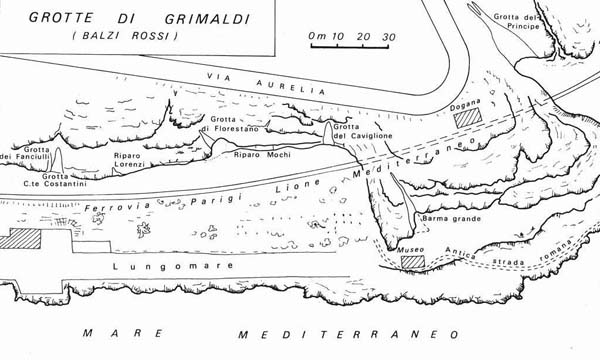
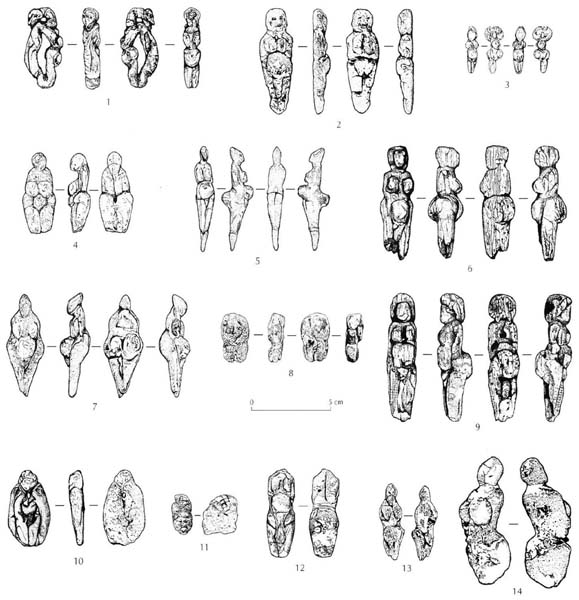
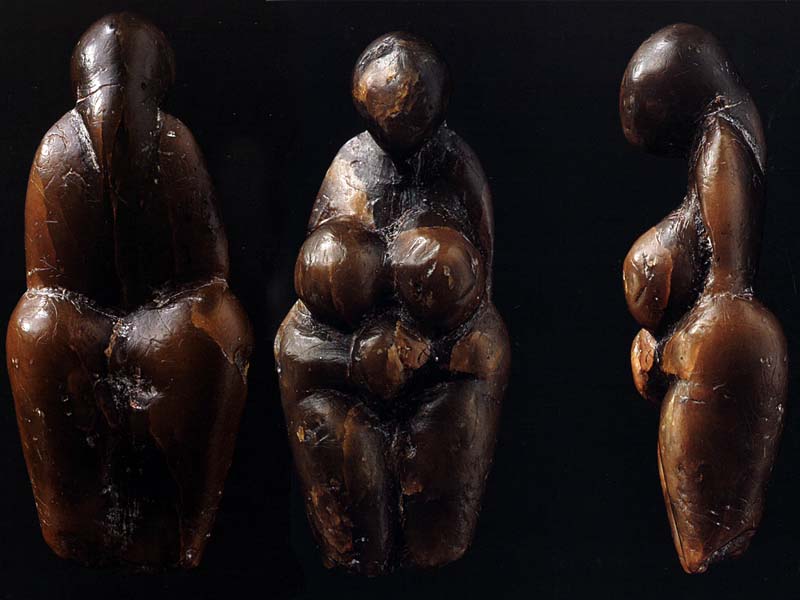

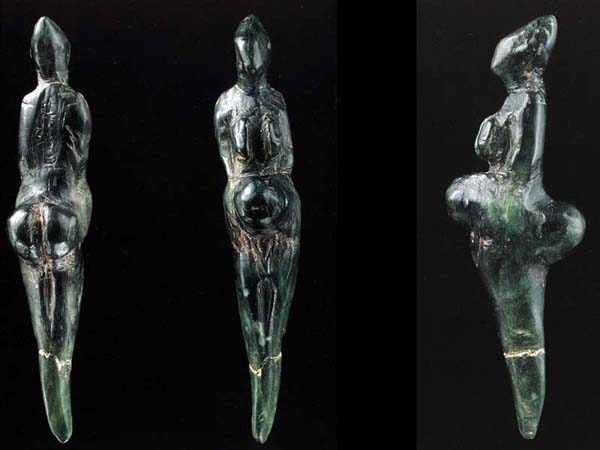
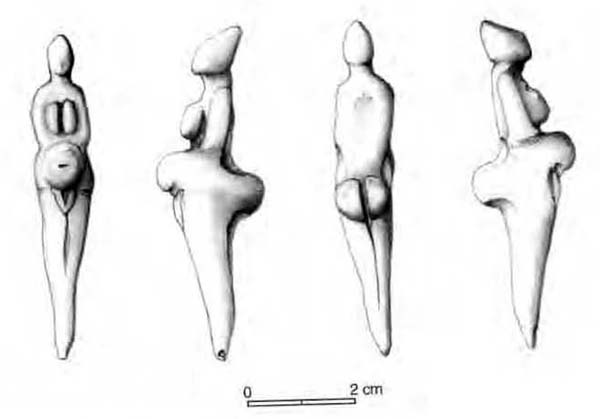

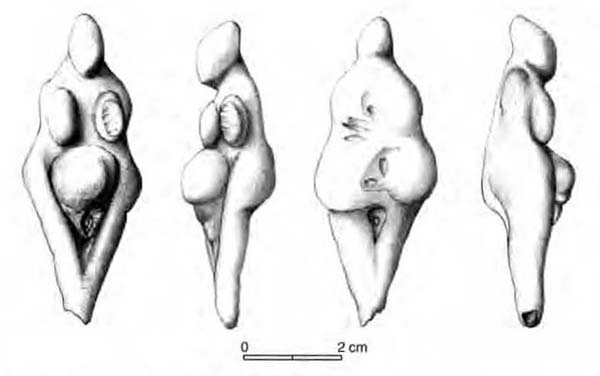

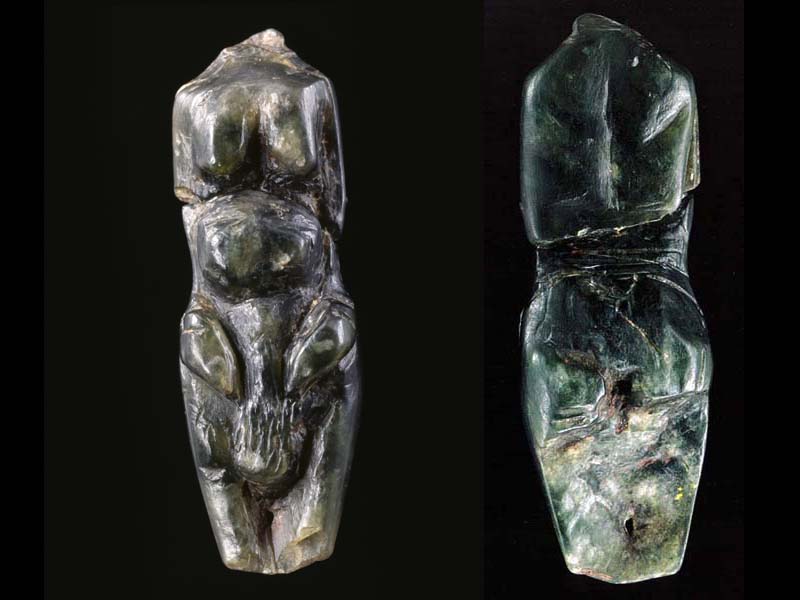
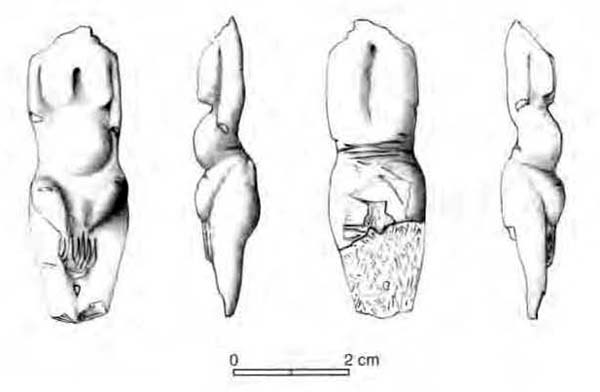
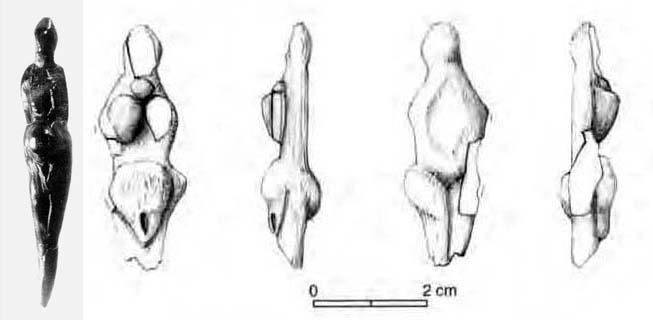

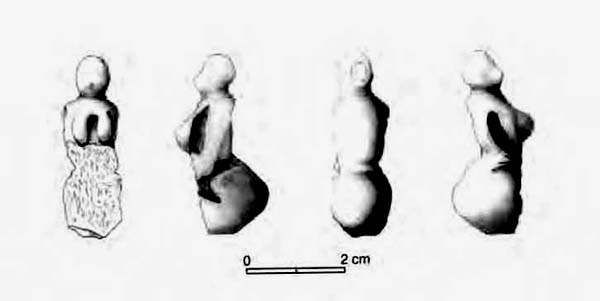
Historical notes
Of the 7 figurines owned by the Musée des Antiquites Nationales of Saint Germain-en-Laye, only 2, the yellow steatite figurine (n. 04) and the lady with a crop (n. 13), were discovered during the excavations organized between 1883 and 1884 by Louis Alexandre Jullien, a merchant from Marseilles, at the Barma Grande; the further 5 statuettes were found by him in the Grotta del Principe, which he called "Grotta del Tunnel" or "Grotto of the statuettes", during the excavations carried out clandestinely between 1894 and 1895. Jullien, after moving to Canada, proposed in sale of the so-called "yellow Venus" to Salomon Reinach, then director of the Museé des Antiquités Nationales of Saint-Germain-en-Laye, together with other objects from the Barma Grande, objects which immediately became part of the museum's collection. Edouard Piette, having become aware of the existence of the finds, bought from Jullien on two different occasions, since 1896, six statuettes, the Lozenge, the Pulcinella, the Hermaphrodite, the Lady with the goiter, the Negroid Head and the last in 1902, the Innominata; all of them will later merge into the Saint-Germain-en-Laye Museum where they are currently exhibited. The historical information concerning the finds is described in the essay "Mothers of Time"and "The Balzi Rossi".
CARD
LATEST PUBLISHED TEXTS
VISIT THE FACTSHEETS BY OBJECT

